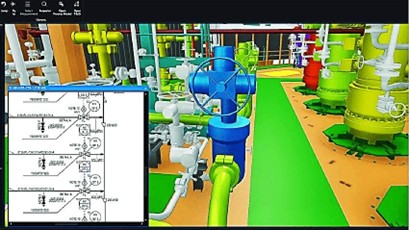From Rig to Cloud: AI and IoT Reshaping Oilfield Operations

The digital oilfield is revolutionizing oil exploration and production by integrating artificial intelligence (AI), Internet of Things (IoT), automation, and advanced computing. AI is crucial in subsurface analysis, processing seismic data, well logs, and satellite images to autonomously detect faults and horizons, speed up prospect evaluation, and minimize interpretation durations. Simultaneously, IoT devices integrated into rigs, pipelines, and separators deliver ongoing data streams regarding pressure, temperature, vibration, and flow, facilitating predictive analytics that identify anomalies early, minimize downtime, and enhance maintenance planning. These developments form a fresh backdrop that allows geoscientists and engineers to make quicker and more precise decisions.
Automation goes beyond optimizing drilling to include remote operations and real-time monitoring. Operators increasingly depend on AI-powered systems for weight-on-bit management, stuck-pipe forecasting, and drone inspections, leading to quicker, safer, and more economical wells. The emergence of digital twins—virtual models of facilities and reservoirs—boosts efficiency by enabling 'what-if' analyses, enhanced flow assurance, and synchronized actions across various installations.

Instances like Equinor’s Echo platform illustrate how digital twins enhance operational safety and efficiency while fostering transparency throughout extensive offshore networks. To foster these advancements, businesses are making significant investments in supercomputers and cloud platforms, facilitating quick seismic imaging, reservoir modeling, and real-time simulation.
In the future, digital oilfields will be influenced by edge AI utilized at wellsite, the implementation of 5G and low-earth-orbit satellite connections for remote sites, and closed-loop control systems for drilling and artificial lift. Monte Carlo and ensemble simulations will enable the quantification of uncertainty in daily choices, resulting in more dependable results. Experts anticipate ongoing worldwide expansion in digital oilfield solutions as companies seek to enhance efficiency, decrease emissions, and achieve safer, automated operations.
In line with these global advances, Presidency University—via the Presidency School of Engineering and its Department of Petroleum Engineering—provides students with hands-on experience in AI, IoT, and automation within petroleum engineering. Utilizing advanced labs and simulation tools such as CMG, Halliburton Landmarks, Kappa Schlumberger software, etc., students experience real-time data collection, predictive analysis, and automation that reflect industry standards. This practical method prepares upcoming engineers to improve oilfield processes, boost recovery techniques, and aid in sustainable energy strategies in a technology-focused age.
Written by,
Mr. Bhaskarjyoti Khanikar
Assistant Professor Dept. of Petroleum Engineering
Presidency School of Engineering













 Rajanukunte, Yelahanka, Bengaluru, Karnataka, Pin: 560119, India
Rajanukunte, Yelahanka, Bengaluru, Karnataka, Pin: 560119, India
 +91 9022092222
+91 9022092222